For nearly 450 years, Goa, Daman and Diu were under Portuguese control until the coastal enclaves gained independence on 19th December 1961. But it wasn’t until 1974 that Portugal formally recognized India’s re-annexation of the territories, which were made into one union territory. When Goa achieved full statehood in 1987, Daman and Diu were made into two districts in one Union Territory, albeit a few hundred kilometres apart.
Situated on the south coast of the Kathiawar peninsula and separated from the mainland by a tidal creek, Diu seems like a land that time had forgotten. Traffic is non-existent, the air is clean and wide open beaches lay dotted by clumps of hoka (Hyphoena indica), a type of branching palm brought from Africa by the Portuguese, found nowhere else in the country.
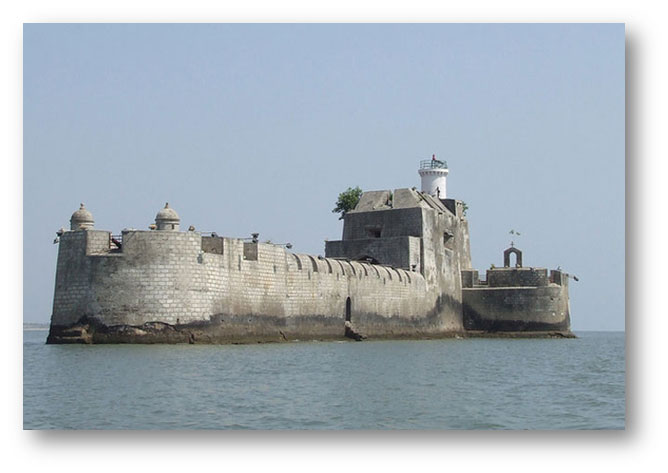
Pani Kotha, Fortim-do-Mar, Diu
Despite its idyllic charm, Diu has a tumultuous past. In 1509, it was the site of a pivotal clash that involved many nations. The Battle of Diu was fought between Portugal and a combined force of Turkey, Egypt, Venice, the Republic of Ragusa (now Dubrovnik) and the Sultan of Gujarat, Mahmud Begada. Despite repeated forays by the Portuguese to acquire Diu, it was given to them on a platter in 1535 by Sultan Bahadur Shah of Gujarat as a reward for their military aid against the Mughal emperor Humayun. As part of a defensive alliance, the Portuguese were allowed to construct a fort and maintain a garrison on the island.
The Siege of Diu by the Ottoman Empire in 1538 and later attacks by the Arabs of Muscat and the Dutch failed to dislodge the Portuguese from Diu. Only a detailed exploration of Diu Fort will make you understand why it was one of the most important Portuguese forts in Asia.
Constructed in 1535 by Nuno Da Cunha and completed by Dom João de Castro after the Siege of 1545, Diu Fort stands on the island’s extreme southeast point, skirted by sea on three sides. Two crocodile-infested ditches and double gateways protected the fortress and seven bastions on the outer and inner lines, named after Christian saints, faced the city to the west. St George bastion, the oldest part of the fort, protected the gateway and landing pier, while a labyrinthine passage led to the Governor’s Palace, prison, barracks for garrisons, state offices, churches and a lighthouse with a splendid view.
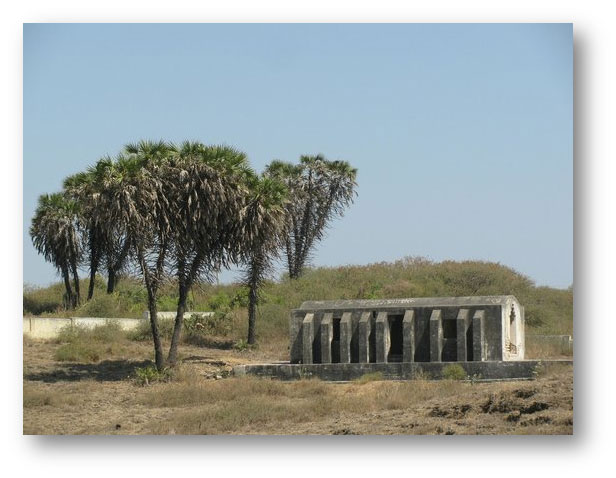
Parsi Bungali
Stone cisterns collected rain water and there were enough storage facilities for arms, ammunition, rations and water to withstand any siege. With 60 movable cannons and ramparts to drag them up for reinforcing a front, the fort also had several underground escape channels. There are two types of tourists in Diu, those who come for Daru Darshan, attracted by cheap booze in an otherwise dry state and there are those who come for Diu Darshan.
Nowhere is the Portuguese imprint more visible than Old Diu, where churches are reminiscent of Bom Jesus in Goa and old women in gowns chatter in Portuguese. Of the three Baroque churches in Diu, the first church built was that of St. Francis of Assisi. Erected in 1593 as a Franciscan friary, its cloisters now serve as a hospital. St Thomas Church, a huge gothic edifice built in 1598 is converted into the Diu Museum with 400-year-old wooden idols, stone tablets, and artefacts.
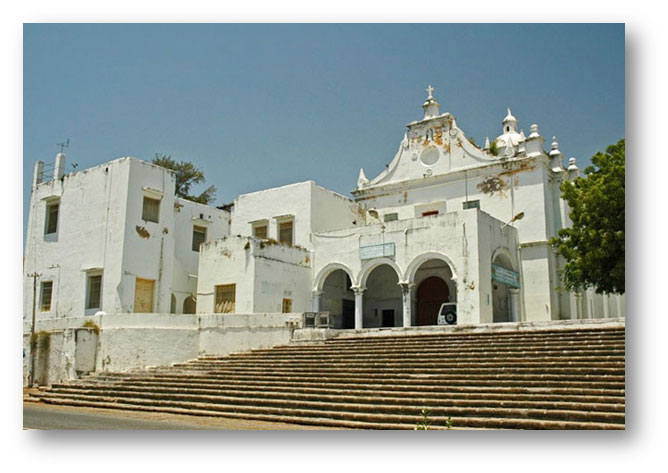
St. Francis of Assisi Church, its cloisters now serve as a hospital
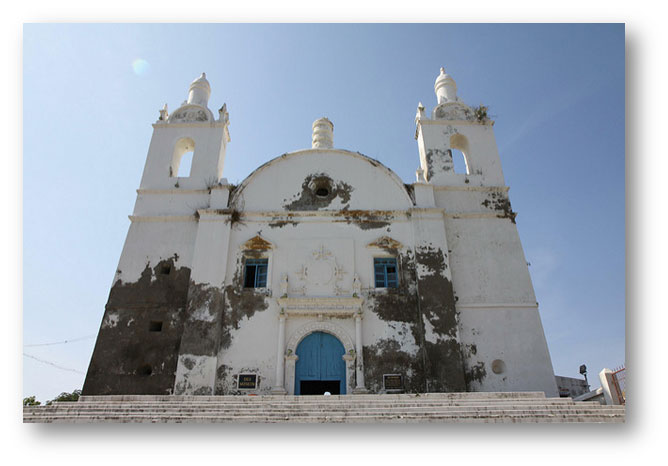
St Thomas Church, converted into the Diu Museum

St. Paul’s Church, Diu
The only church still used for its original purpose is St. Paul’s Church dedicated to our Lady of Immaculate Conception. Founded by Jesuits in 1600 as a seminary and rebuilt in 1807, its Gothic façade and magnificent wood-carved altar and pulpit are masterpieces of Christian Art and believed to be the most elaborate of any Portuguese church in India. As a reference to its proximity to the sea, shell-like motifs were integrated into the intricate designs. Interestingly, the Portuguese built Diu’s churches with domes, not only because of a lack of wood but also to protect it from cyclones.
But under the grand Portuguese façade, lies an older history that peeps through Diu’s nooks and crannies. At the ancient Shiva shrine on the seashore at Gangeswar, waves lap against the lingas as libations. On a hillock stood the shrine of Jallandhar, a water demon slain by Vishnu’s discus, lending its name to the Chakratirth beach.
Diu also reserves its place in Parsi history. The sacred fire brought from Iran was carried to Kohistan in Khurasan and after a century of safe-keeping moved to the port of Hormuz in the Persian Gulf for fifteen years, before ending up in South Saurashtha at Diu. Here, it lodged for nineteen years, until it finally found its way to Sanjan, Navsari and Udvada.
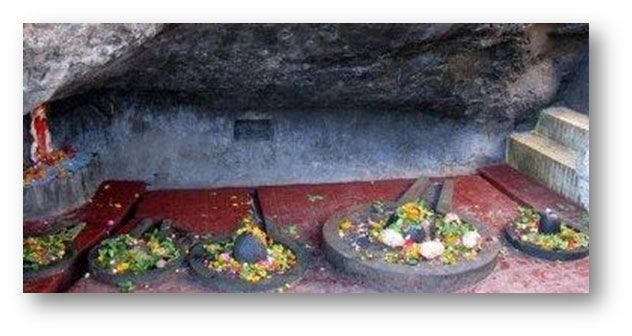
Gangeswar Temple
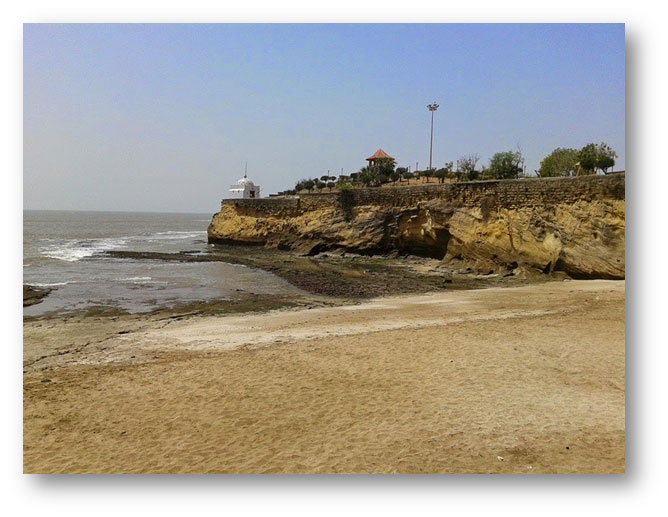
Jallandhar Beach
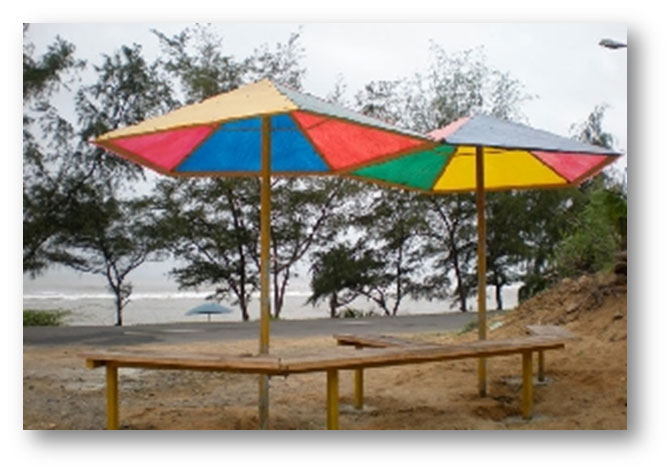
Chakratirth Beach
The town lay to the eastern side of the 40 sq km island while on the opposite end on the mainland is the village of Ghoghla. Both the Nagoa and Ghoghla beaches are quiet, except on weekends. Near the Sunset Point is a monument dedicated to the crew of INS Khukri, whose crew chose to go down with the Indian warship when hit by three torpedoes fired from PNS Hangor, a Pakistani submarine, on 9 December, 1971.
The serene beaches, stunning Naida Caves, the walled city of Jhampa, the colourful chhakdas (local fatfatiya-type transport), the Kathiawari influence and historic churches gives Diu a surreal backdrop! And Hindi Film industry was quick to tap its potential.
Switzerland was recreated in Diu for Salman Khan’s Veergati while Ajay Devgan shot three of his films here, almost becoming Diu’s unofficial brand ambassador. Locals proudly point out Panikotha or Fortim-do-Mar used in Qayamat, a ship-shaped structure in the sea near the fort connected to it by an under-sea tunnel. Devgan returned to shoot Zameer and Priyadarshan’s Aakrosh, fuelling uncontrollable fan frenzy.
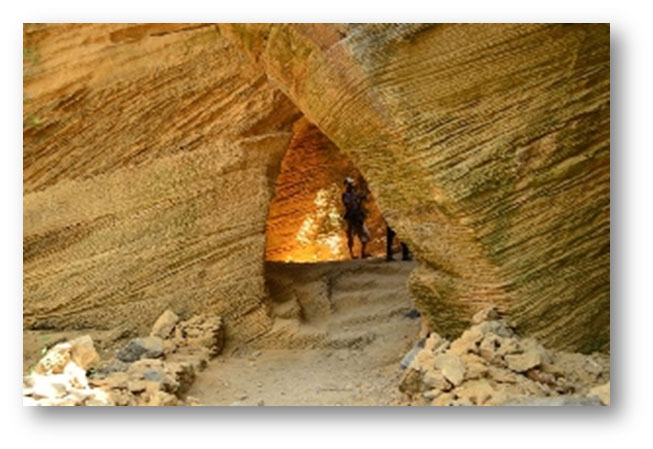
Naida Caves
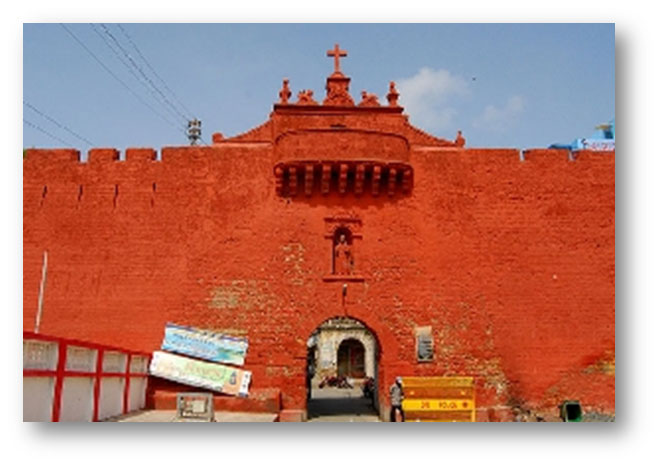
Zampa Gateway
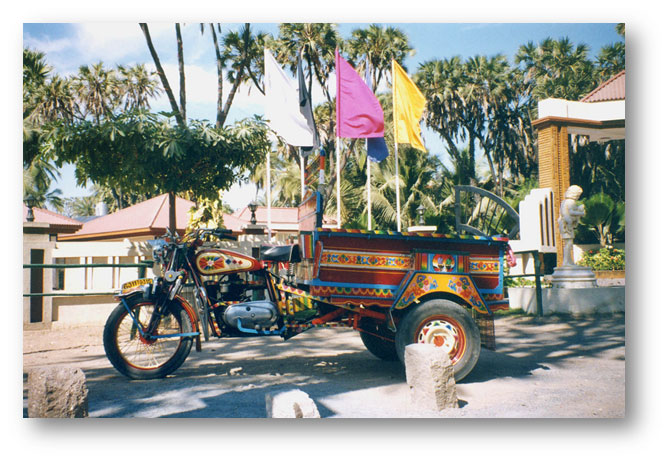
Colourful chhakdas (local fatfatiya – type of transport)
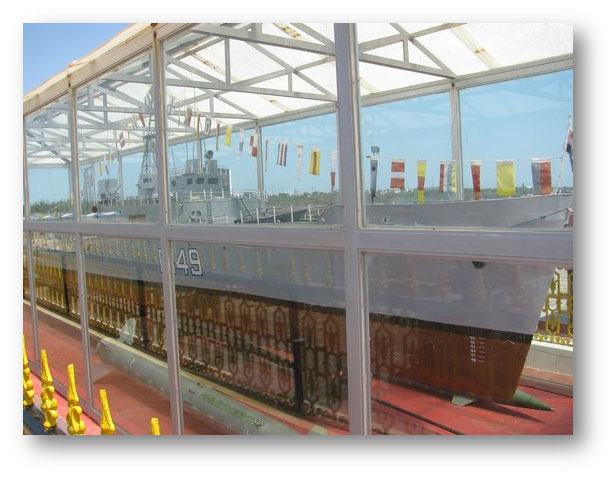
INS Khukri Memorial
Post by: Khiloni Dhiren
This article is based on an article by Anurag Mallick that appeared in the October, 2011 issue of Rail Bandhu, the Indian Railways’ in-train magazine.

